Why Bennu?
Why Bennu?
Our OSIRIS-REx spacecraft will travel to a near-Earth asteroid, called Bennu, where it will collect a sample to bring back to Earth for study.
But why was Bennu chosen as the target destination asteroid for OSIRIS-REx? The science team took into account three criteria: accessibility, size and composition.

Accessibility: We need an asteroid that we can easily travel to, retrieve a sample from and return to Earth, all within a few years time. The closest asteroids are called near-Earth objects and they travel within 1.3 Astronomical Units (AU) of the sun. For those of you who don’t think in astronomical units…one Astronomical Unit is approximately equal to the distance between the sun and the Earth: ~93 million miles.

For a mission like OSIRIS-REx, the most accessible asteroids are somewhere between 0.08 – 1.6 AU. But we also needed to make sure that those asteroids have a similar orbit to Earth. Bennu fit this criteria! Check!
Size: We need an asteroid the right size to perform two critical portions of the mission: operations close to the asteroid and the actual sample collection from the surface of the asteroid. Bennu is roughly spherical and has a rotation period of 4.3 hours, which is in our size criteria. Check!

Composition: Asteroids are categorized by their spectral properties. In the visible and infrared light minerals have unique signatures or colors, much like fingerprints. Scientists use these fingerprints to identify molecules, like organics. For primitive, carbon-rich asteroids like Bennu, materials are preserved from over 4.5 billion years ago! We’re talking about the start of the formation of our solar system here! These primitive materials could contain organic molecules that may be the precursors to life here on Earth, or elsewhere in our solar system.

Thanks to telescopic observations in the visible and the infrared, as well as in radar, Bennu is currently the best understood asteroid not yet visited by a spacecraft.
All of these things make Bennu a fascinating and accessible asteroid for the OSIRIS-REx mission.
Make sure to follow us on Tumblr for your regular dose of space: http://nasa.tumblr.com
More Posts from Evisno and Others

Saturn’s hexagon is a hexagonal cloud pattern that has persisted at the North Pole of Saturn since its discovery in 1981. At the time, Cassini was only able to take infrared photographs of the phenomenon until it passed into sunlight in 2009, at which point amateur photographers managed to be able to photograph it from Earth.
The structure is roughly 20,000 miles (32,000 km) wide, which is larger than Earth; and thermal images show that it reaches roughly 60 miles (100 km) down into Saturn’s interior.
Read an explanation of how Saturn’s hexagon works here: [x]

A Glowing Pool Of Light
"NGC 3132 is a striking example of a planetary nebula. This expanding cloud of gas, surrounding a dying star, is known to amateur astronomers in the southern hemisphere as the "Eight-Burst" or the "Southern Ring" Nebula.
The name “planetary nebula” refers only to the round shape that many of these objects show when examined through a small visual telescope. In reality, these nebulae have little or nothing to do with planets, but are instead huge shells of gas ejected by stars as they near the ends of their lifetimes. NGC 3132 is nearly half a light year in diameter, and at a distance of about 2000 light years is one of the nearer known planetary nebulae. The gases are expanding away from the central star at a speed of 9 miles per second.
This image, captured by NASA’s Hubble Space Telescope, clearly shows two stars near the center of the nebula, a bright white one, and an adjacent, fainter companion to its upper right. (A third, unrelated star lies near the edge of the nebula.) The faint partner is actually the star that has ejected the nebula. This star is now smaller than our own Sun, but extremely hot. The flood of ultraviolet radiation from its surface makes the surrounding gases glow through fluorescence. The brighter star is in an earlier stage of stellar evolution, but in the future it will probably eject its own planetary nebula”
Credit: The Hubble Heritage Team










Ask Ethan: How Do We Know The Universe Is 13.8 Billion Years Old?
“You’ve heard the story before: the Universe began with the Big Bang 13.8 billion years ago, and formed atoms, stars, galaxies, and eventually planets with the right ingredients for life. Looking at distant locations in the Universe is also looking back in time, and somehow, through the power of physics and astronomy, we’ve figured out not only how the Universe began, but its age. But how do we know how old the Universe is? That what Thys Hauptfleisch wants to know for this week’s Ask Ethan:
Ethan, how was the 13.8 billion years calculated? (In English please!)”
There’s a unique relationship between everything that exists in the Universe today – the stars and galaxies, the large-scale structure, the leftover glow from the Big Bang, the expansion rate, etc. – and the amount of time that’s passed since it all began. When it comes to our Universe, there really was a day without a yesterday, but how do we know exactly how much time has passed between then and now? There are two ways: one complex and one simple. The complex way is to determine all the matter and energy components making up the Universe, to measure how the Universe has expanded over the entirety of its cosmic history, and then, in the context of the Big Bang, to deduce how old the Universe must be. The other is to understand stars, measure them, and determine how old the oldest ones are.
The complex answer is more accurate, but more importantly, they both agree with each other. Get the details on this week’s Ask Ethan!
Celebrating 17 Years of NASA’s ‘Little Earth Satellite That Could’
The satellite was little— the size of a small refrigerator; it was only supposed to last one year and constructed and operated on a shoestring budget — yet it persisted.
After 17 years of operation, more than 1,500 research papers generated and 180,000 images captured, one of NASA’s pathfinder Earth satellites for testing new satellite technologies and concepts comes to an end on March 30, 2017. The Earth Observing-1 (EO-1) satellite will be powered off on that date but will not enter Earth’s atmosphere until 2056.
“The Earth Observing-1 satellite is like The Little Engine That Could,” said Betsy Middleton, project scientist for the satellite at NASA’s Goddard Space Flight Center in Greenbelt, Maryland.
To celebrate the mission, we’re highlighting some of EO-1’s notable contributions to scientific research, spaceflight advancements and society.
Scientists Learn More About Earth in Fine Detail

This animation shifts between an image showing flooding that occurred at the Arkansas and Mississippi rivers on January 12, 2016, captured by ALI and the rivers at normal levels on February 14, 2015 taken by the Operational Land Imager on Landsat 8. Credit: NASA’s Earth Observatory
EO-1 carried the Advanced Land Imager that improved observations of forest cover, crops, coastal waters and small particles in the air known as aerosols. These improvements allowed researchers to identify smaller features on a local scale such as floods and landslides, which were especially useful for disaster support.

On the night of Sept. 6, 2014, EO-1’s Hyperion observed the ongoing eruption at Holuhraun, Iceland as shown in the above image. Partially covered by clouds, this scene shows the extent of the lava flows that had been erupting.
EO-1’s other key instrument Hyperion provided an even greater level of detail in measuring the chemical constituents of Earth’s surface— akin to going from a black and white television of the 1940s to the high-definition color televisions of today. Hyperion’s level of sophistication doesn’t just show that plants are present, but can actually differentiate between corn, sorghum and many other species and ecosystems. Scientists and forest managers used these data, for instance, to explore remote terrain or to take stock of smoke and other chemical constituents during volcanic eruptions, and how they change through time.
Crowdsourced Satellite Images of Disasters

EO-1 was one of the first satellites to capture the scene after the World Trade Center attacks (pictured above) and the flooding in New Orleans after Hurricane Katrina. EO-1 also observed the toxic sludge in western Hungary in October 2010 and a large methane leak in southern California in October 2015. All of these scenes, which EO-1 provided quick, high-quality satellite imagery of the event, were covered in major news outlets. All of these scenes were also captured because of user requests. EO-1 had the capability of being user-driven, meaning the public could submit a request to the team for where they wanted the satellite to gather data along its fixed orbits.

This image shows toxic sludge (red-orange streak) running west from an aluminum oxide plant in western Hungary after a wall broke allowing the sludge to spill from the factory on October 4, 2010. This image was taken by EO-1’s Advanced Land Imager on October 9, 2010. Credit: NASA’s Earth Observatory
Artificial Intelligence Enables More Efficient Satellite Collaboration

This image of volcanic activity on Antarctica’s Mount Erebus on May 7, 2004 was taken by EO-1’s Advanced Land Imager after sensing thermal emissions from the volcano. The satellite gave itself new orders to take another image several hours later. Credit: Earth Observatory
EO-1 was among the first satellites to be programmed with a form of artificial intelligence software, allowing the satellite to make decisions based on the data it collects. For instance, if a scientist commanded EO-1 to take a picture of an erupting volcano, the software could decide to automatically take a follow-up image the next time it passed overhead. The Autonomous Sciencecraft Experiment software was developed by NASA’s Jet Propulsion Laboratory in Pasadena, California, and was uploaded to EO-1 three years after it launched.

This image of Nassau Bahamas was taken by EO-1’s Advanced Land Imager on Oct 8, 2016, shortly after Hurricane Matthew hit. European, Japanese, Canadian, and Italian Space Agency members of the international coalition Committee on Earth Observation Satellites used their respective satellites to take images over the Caribbean islands and the U.S. Southeast coastline during Hurricane Matthew. Images were used to make flood maps in response to requests from disaster management agencies in Haiti, Dominican Republic, St. Martin, Bahamas, and the U.S. Federal Emergency Management Agency.
The artificial intelligence software also allows a group of satellites and ground sensors to communicate and coordinate with one another with no manual prompting. Called a “sensor web”, if a satellite viewed an interesting scene, it could alert other satellites on the network to collect data during their passes over the same area. Together, they more quickly observe and downlink data from the scene than waiting for human orders. NASA’s SensorWeb software reduces the wait time for data from weeks to days or hours, which is especially helpful for emergency responders.
Laying the Foundation for ‘Formation Flying’

This animation shows the Rodeo-Chediski fire on July 7, 2002, that were taken one minute apart by Landsat 7 (burned areas in red) and EO-1 (burned areas in purple). This precision formation flying allowed EO-1 to directly compare the data and performance from its land imager and the Landsat 7 ETM+. EO-1’s most important technology goal was to test ALI for future Landsat satellites, which was accomplished on Landsat 8. Credit: NASA’s Goddard Space Flight Center
EO-1 was a pioneer in precision “formation flying” that kept it orbiting Earth exactly one minute behind the Landsat 7 satellite, already in orbit. Before EO-1, no satellite had flown that close to another satellite in the same orbit. EO-1 used formation flying to do a side-by-side comparison of its onboard ALI with Landsat 7’s operational imager to compare the products from the two imagers. Today, many satellites that measure different characteristics of Earth, including the five satellites in NASA’s A Train, are positioned within seconds to minutes of one another to make observations on the surface near-simultaneously.
For more information on EO-1’s major accomplishments, visit: https://www.nasa.gov/feature/goddard/2017/celebrating-17-years-of-nasa-s-little-earth-satellite-that-could
Make sure to follow us on Tumblr for your regular dose of space: http://nasa.tumblr.com/.


That’s Electrooculography!
The eye is a basically a dipole ( a separation of electric charges )
It was observed by Reymond in 1848 that the cornea of the eye is electrically positive relative to the back of the eye.This potential was surprisingly not dependent on the amount of light falling on the eye.

The cornea is the transparent front part of the eye
Dipoles and Eye Tracking
This means that as the eye moves from side to side, the dipole moves as well. To capture the movement of the dipole, one places two electrodes on both sides of the eye. ( like the one placed on this guy )

If the eye moves from the center position to the right, one of the electrodes becomes slightly positive and the other negative. This leads to a spike in the positive direction.

Source
And if the eye moves from the center position to the left, the polarity of the electrodes reverses. This leads to a spike in the negative direction.

That’s about it. That’s EOG for you all. I hope you guys enjoyed this post.
Have a great day!

Sources and Extras:
More about EOG
Gif source : The backyard brains











Portraits of birds by Laila Jeffreys
Solar System: Things to Know This Week
Mark your calendars for summer 2018: That’s when we’re launching a spacecraft to touch the sun.
In honor of our first-ever mission to the heart of the solar system, this week we’re delving into the life and times of this powerful yellow dwarf star.

1. Meet Parker
Parker Solar Probe, our first mission to go to the sun, is named after Eugene Parker, an American astrophysicist who first theorized that the sun constantly sends out a flow of particles and energy called the solar wind. This historic mission will explore one of the last regions of the solar system to be visited by a spacecraft and help scientists unlock answers to questions they’ve been pondering for more than five decades.

2. Extra SPF, Please
Parker Solar Probe will swoop within 4 million miles of the sun’s surface, facing heat and radiation like no spacecraft before it. The mission will provide new data on solar activity to help us better understand our home star and its activity - information that can improve forecasts of major space-weather events that could impact life on Earth.

3. Majorly Massive
The sun is the center of our solar system and makes up 99.8 percent of the mass of the entire solar system. If the sun were as tall as a typical front door, Earth would be about the size of a nickel.
4. Different Spin
Since the sun is not a solid body, different parts of the sun rotate at different rates. At the equator, the sun spins once about every 25 days, but at its poles the sun rotates once on its axis every 36 Earth days.

5. Can’t Stand on It
The sun is a star and a star doesn’t have a solid surface. Rather, it’s a ball of ionized gas 92.1% hydrogen (H2) and 7.8% helium (He) held together by its own gravity.
6. Center of Attention
The sun isn’t a planet, so it doesn’t have any moons. But, the sun is orbited by eight planets, at least five dwarf planets, tens of thousands of asteroids, and hundreds of thousands to trillions of comets and icy bodies.

7. It’s Hot in There
And we mean really, really hot. The temperature at the sun’s core is about 27 million degrees Fahrenheit. However, its atmosphere, the corona, can reach temperatures of 3 million degrees. (That’s as if it got hotter the farther away you got from a fire, instead of cooler!) Parker Solar Probe will help scientists solve the mystery of why the corona’s temperature is so much higher than the surface.

8. Travel Conditions
The sun influences the entire solar system, so studying it helps us better understand the space weather that our astronauts and spacecraft travel through.
9. Life on the Sun?
Better to admire from afar. Thanks to its hot, energetic mix of gases and plasma, the sun can’t be home to living things. However, we can thank the sun for making life on Earth possible by providing the warmth and energy that supply Earth’s food chain.
10. Chance of a Lifetime
Last but not least, don’t forget that the first total solar eclipse to sweep across the U.S. from coast-to-coast since 1918 is happening on August 21, 2017. Our toolkit has you need to know to about it.
Want to learn more? Read our full list of the 10 things to know this week about the solar system HERE.
Make sure to follow us on Tumblr for your regular dose of space: http://nasa.tumblr.com
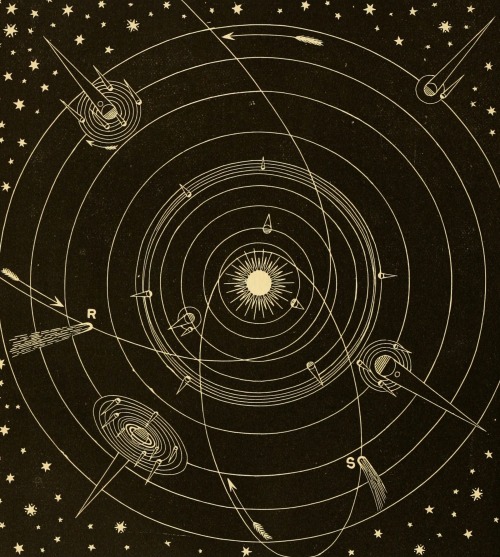
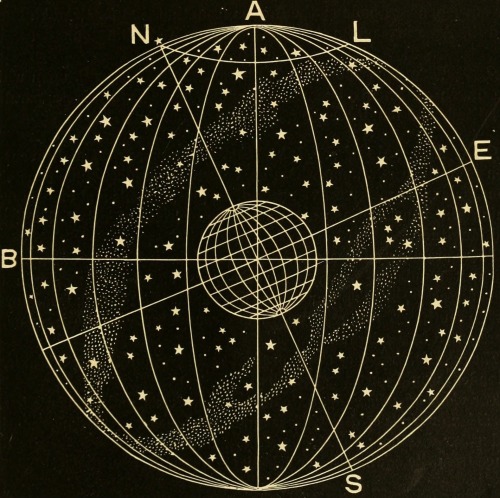
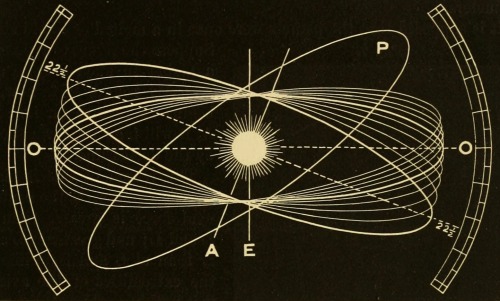
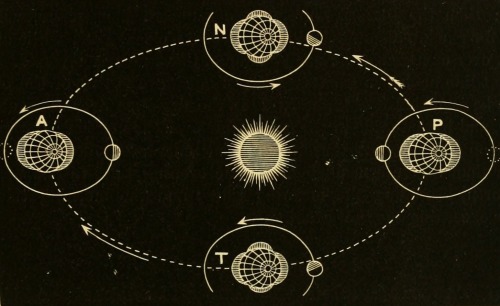
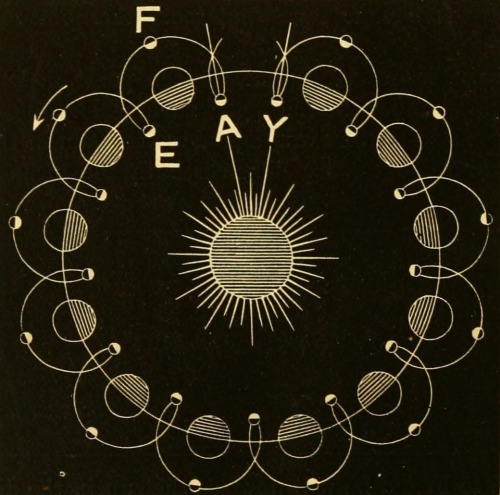
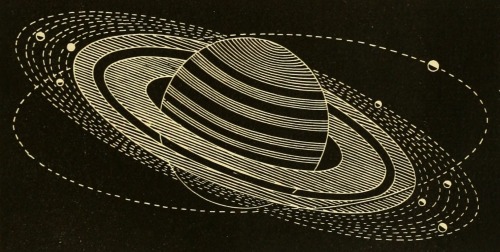
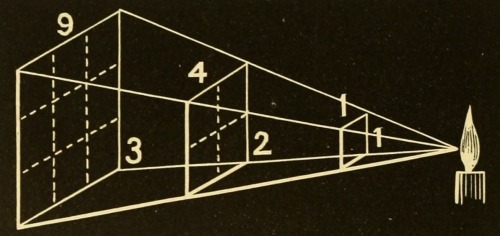
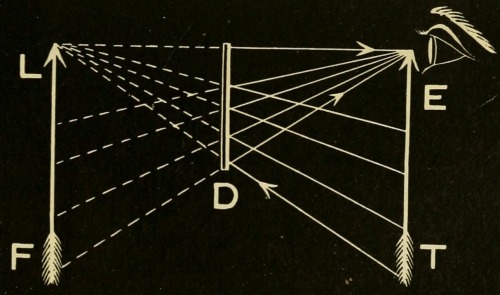
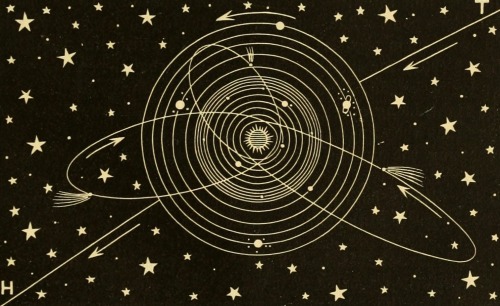
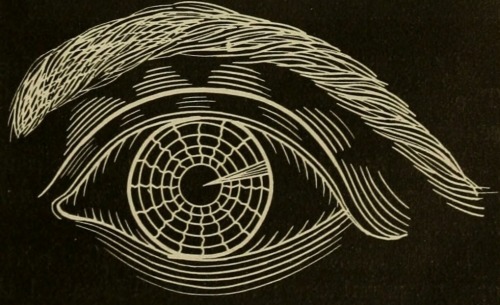
Frank G. Johnson. Solar System, Celestial and Terrestrial Latitude, The Ecliptic, Spring and Neap Tides, The Moon’s Path Around the Sun, Saturn’s Rings, Intensity of Light at Different Distances, The Optics of Plane Mirrors, The Orbit of the Sun, Method of Adjusting the Pupil or Aperture of the Eye. Johnson’s Natural Philosophy, and Key to Philosophical Charts. 1872.
-
 astrodragonsworld liked this · 6 years ago
astrodragonsworld liked this · 6 years ago -
 best-hotels-posts reblogged this · 8 years ago
best-hotels-posts reblogged this · 8 years ago -
 bog-bitchy reblogged this · 8 years ago
bog-bitchy reblogged this · 8 years ago -
 ttylinitm liked this · 8 years ago
ttylinitm liked this · 8 years ago -
 sidcam liked this · 8 years ago
sidcam liked this · 8 years ago -
 thinkingredwizard reblogged this · 8 years ago
thinkingredwizard reblogged this · 8 years ago -
 animate-mush reblogged this · 8 years ago
animate-mush reblogged this · 8 years ago -
 keenturtleinfluencer-blog liked this · 8 years ago
keenturtleinfluencer-blog liked this · 8 years ago -
 evisno reblogged this · 8 years ago
evisno reblogged this · 8 years ago -
 spacesceneofficial-blog liked this · 8 years ago
spacesceneofficial-blog liked this · 8 years ago -
 unclegoddess liked this · 8 years ago
unclegoddess liked this · 8 years ago -
 follow-the-star liked this · 8 years ago
follow-the-star liked this · 8 years ago -
 echnolon reblogged this · 8 years ago
echnolon reblogged this · 8 years ago -
 littleplasticspaceship reblogged this · 8 years ago
littleplasticspaceship reblogged this · 8 years ago -
 the-nomadic-writer liked this · 8 years ago
the-nomadic-writer liked this · 8 years ago -
 carlosemiliopir liked this · 8 years ago
carlosemiliopir liked this · 8 years ago -
 rmahin liked this · 8 years ago
rmahin liked this · 8 years ago -
 atlas-prime liked this · 8 years ago
atlas-prime liked this · 8 years ago -
 padalucky reblogged this · 8 years ago
padalucky reblogged this · 8 years ago -
 pickled-salt reblogged this · 8 years ago
pickled-salt reblogged this · 8 years ago -
 withcrafts liked this · 8 years ago
withcrafts liked this · 8 years ago -
 rjbailey liked this · 8 years ago
rjbailey liked this · 8 years ago -
 alienfrauds liked this · 8 years ago
alienfrauds liked this · 8 years ago -
 melimelo85 reblogged this · 8 years ago
melimelo85 reblogged this · 8 years ago -
 starsofshadowanddust liked this · 8 years ago
starsofshadowanddust liked this · 8 years ago -
 roy-biv liked this · 8 years ago
roy-biv liked this · 8 years ago -
 daydreamingnerdcat liked this · 8 years ago
daydreamingnerdcat liked this · 8 years ago -
 vivianent liked this · 8 years ago
vivianent liked this · 8 years ago -
 abbagiuliana liked this · 8 years ago
abbagiuliana liked this · 8 years ago -
 hatetoseeyouheartbreaklove liked this · 8 years ago
hatetoseeyouheartbreaklove liked this · 8 years ago -
 szyli liked this · 8 years ago
szyli liked this · 8 years ago -
 super-starstruckcollectornu-blog liked this · 8 years ago
super-starstruckcollectornu-blog liked this · 8 years ago -
 megaradcollectionwolfthings-blog liked this · 8 years ago
megaradcollectionwolfthings-blog liked this · 8 years ago -
 chalkrevelations reblogged this · 8 years ago
chalkrevelations reblogged this · 8 years ago